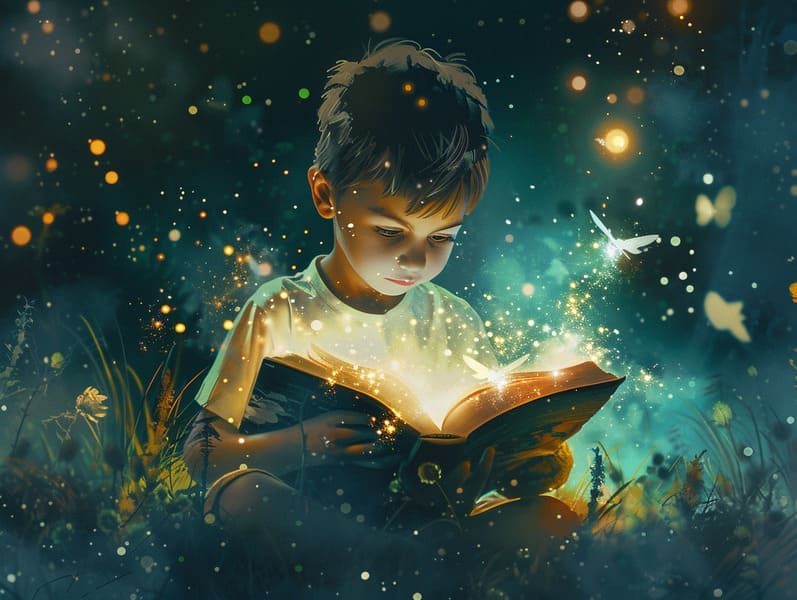
Famous fairy tales have old origins. These narratives have been recounted from one generation to the next well before they were ever inscribed. They arose from a variety of cultures, including African traditions. They were initially transmitted among mature audiences, often carrying themes and messages mirroring the societal norms and beliefs of the time.
The Brothers Grimm, Jacob and Wilhelm Grimm, were among the first to compile and publish many of these beloved narratives. Their collection, "Grimm's Children's Stories," included tales like "Cinderella," "The Bread Crumb Trail," and "Schneewittchen," which have since become mainstays in the world of beloved fairy tales. Similarly, the Danish author's magical stories, such as "The Little Mermaid," and "The Duckling's Story," have stolen hearts worldwide, solidifying their place in the pantheon of classic fairy tales.
Despite their ancient origins, these tales remain as significant as ever, especially as kids' bedtime tales. These magical stories are now available in many formats, including colorful picture books, magical animations, and digital fairy tales.
Their lasting presence can be connected to several magical reasons:
Important Morals: Timeless fairy tales often provide important moral lessons. Stories like "The Shepherd Boy and the Wolf" teach the benefit of integrity, while "The Story of the Tortoise and the Hare" point out the benefits of determination and humbleness. These tales offer young ones clear distinctions between good and bad, guiding their moral compass in a soft yet lasting way.
Compassion and Knowledge: Classic fairy tales frequently feature heroes facing tests and troubles, inciting children to relate with their struggles and applaud their triumphs. For instance, "Beauty and the Beast" illustrates the necessity of seeing beyond looks to recognize the inner spirit of a being, nurturing understanding and recognition.
Cultural Perception: Many ancient fairy tales are infused with the cultural contexts from which they came. Learning from these narratives can provide illuminating insights into different cultures, promoting a sense of cultural insight and appreciation.
Inventiveness and Fantasy: The enchanted elements in timeless fairy tales—enchanted forests—enliven children’s creativity. These stories bring readers to enchanted realms, stimulating innovative ideas and a sense of mystery that persists a lifetime.
Old fairy tales are not only whimsical but also edifying. They act as bewitching tools in developing various cognitive and affective skills in kids. When fairy tales are told out loud, they improve verbal development by introducing new terms and meanings and complicated sentence structures. This practice also fosters auditory perception and attentiveness, as young ones follow the story, eager to see what happens next.
Furthermore, debating the themes and characters of timeless fairy tales can promote reasoning skills and thinking skills. Children are shown to pinpoint patterns, expect results, and get cause and effect. These analyses also advance young ones say their thoughts and feelings, contributing to their emotional intelligence.
In today’s online age, the presence of internet fairy tales has made these narratives more available than ever. Online platforms and programs provide large libraries of old fairy tales that can be accessed or listened via anytime, anywhere. Fairy tales told out loud are particularly common, making available an interactive way for children to engage with these captivating stories. Narrated books and read-out-loud stories move characters and settings to life, often augmented by whimsical sound effects and musical scores that enrich the tale-telling adventure.
The timeless fascination of ancient fairy tales lies in their ability to adjust to modern times while holding onto their central messages. Contemporary versions of these stories often showcase more multicultural characters and modern settings, making them understandable to today’s audience. However, the fundamental themes of spirit, understanding, and righteousness remain unchanged, continuing to reach listeners of all ages.
Fairy tales also offer a sense of calm and familiarity. They bestow a well-structured narrative with a transparent beginning, middle, and end, often drawing to a close with the finalization of conflicts and the triumph of righteousness over wickedness. This foreseeability can be solacing for young readers, offering a sense of solidity in an ever-changing world.
Old fairy tales continue to enthrall and train new generations, maintaining their mystique and pertinence in modern society. As kids' bedtime tales, they furnish a perfect blend of fascination and comprehension, promoting moral values, empathy, and creativity. The prevalence of free fairy tales online and the likability of fairy tales spoken make sure that these timeless narratives remain acquirable to new generations.
By defending and releasing these narratives, we continue to treasure the rich tapestry of lore and cultural heritage. Whether you are exploring a vividly illustrated book, exploring a virtual library, or listening via an sound book, the enchantment of timeless fairy tales is always within reach. These stories highlight of the invariable impact of tales and its ability to unite us across centuries and lands.
Whether you are reading a vividly illustrated book, exploring a web collection, or listening through an read-aloud story, the elegance of ancient fairy tales is always within reach.
These narratives highlight of the undying presence of popular fairy tales with morals fairy tales and its ability to unite us across epochs and places, creating a bond that fascinates and enlightens alike.
Comments on “The Emergence of Fairy Tales and Its Enduring Majesty.”